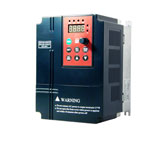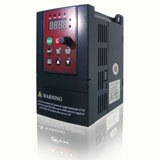Synchronous motor VS induction motor on reciprocating compressor
Although the induction motors are also possible and used, I justify synchronous motors for the following reasons:
1- Synchronous motors generally offer more efficiency than induction ones, and hence in higher ratings (about 5000 hp and higher) they may be more cost effective considering Life Cycle Costs. The exact size of preference to switch to Synchronous shall be determined based on LCC analysis of specific application.
2- A Large reciprocating compressor is a highly variable load and a synchronous motor will keep its speed in this situation while the induction motor would respond with fluctuating speed.
3- Based on API 618 (with reference to IEC and NEMA), a synchronous motor used for reciprocating compressor may tolerate 66% variation in current, while an induction motor is allowed to have only 40% variation in current which in larger compressors may be exceeded (because of variable load).Also Higher efficiency induction motors with less slip, cause more current variations and are prohibited.
Synchronous motors are characterized by limited starting torque, the ability to actively control power factor and less current in-rush than the induction motor. The synchronous motor also requires active matching of torque demand with motor output. Synchronous motors started “across-the–line” also produce oscillatory torques at the twice slip frequency during acceleration (i.e., starting at 120 Hz and decreasing to 0 Hz at full speed). These torques generally require additional transient torsional analysis because of the potential for damage.
Synchronous motors are usually advantageous on slow speed applications (e.g., low speed reciprocating compressors operating from 200-400 RPM) and also on machines larger than about 10,000 to 15,000 HP.
With both motor types, it is important to match the compressor torque versus speed requirements with motor torque versus speed capabilities as discussed in Sections 6.0 and 7.0. Both induction and synchronous motor types can be coupled with a VFD for variable speed operation.
1- Synchronous motors generally offer more efficiency than induction ones, and hence in higher ratings (about 5000 hp and higher) they may be more cost effective considering Life Cycle Costs. The exact size of preference to switch to Synchronous shall be determined based on LCC analysis of specific application.
2- A Large reciprocating compressor is a highly variable load and a synchronous motor will keep its speed in this situation while the induction motor would respond with fluctuating speed.
3- Based on API 618 (with reference to IEC and NEMA), a synchronous motor used for reciprocating compressor may tolerate 66% variation in current, while an induction motor is allowed to have only 40% variation in current which in larger compressors may be exceeded (because of variable load).Also Higher efficiency induction motors with less slip, cause more current variations and are prohibited.
Synchronous motors are characterized by limited starting torque, the ability to actively control power factor and less current in-rush than the induction motor. The synchronous motor also requires active matching of torque demand with motor output. Synchronous motors started “across-the–line” also produce oscillatory torques at the twice slip frequency during acceleration (i.e., starting at 120 Hz and decreasing to 0 Hz at full speed). These torques generally require additional transient torsional analysis because of the potential for damage.
Synchronous motors are usually advantageous on slow speed applications (e.g., low speed reciprocating compressors operating from 200-400 RPM) and also on machines larger than about 10,000 to 15,000 HP.
With both motor types, it is important to match the compressor torque versus speed requirements with motor torque versus speed capabilities as discussed in Sections 6.0 and 7.0. Both induction and synchronous motor types can be coupled with a VFD for variable speed operation.



